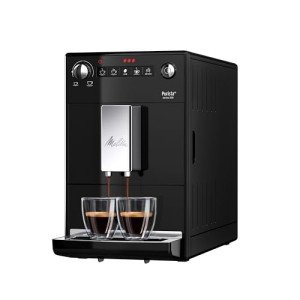The Ultimate Guide to Buying Espresso Coffee Machines
Espresso coffee machines have rapidly end up being a staple in families and coffee shops worldwide. With their ability to produce rich, focused coffee quickly, lots of coffee aficionados prefer brewing espresso at home rather than counting on coffee stores. Buying an espresso machine can be a daunting process, provided the myriad of options available in the market. This short article offers extensive insights into numerous types of espresso machines, key functions to consider, and ultimately assists hopeful home baristas make an informed choice.
Comprehending Espresso Machines
There are several types of espresso machines, each developed for various user preferences and requirements. Below is a table detailing the types of machines offered:
| Type | Description | Pros | Cons |
|---|---|---|---|
| Manual Machines | Operated by hand, enabling full control | Greater control & & quality Steeper learning curve | |
| Semi-Automatic Machines | Combines manual operation with automated features | Versatility and consistency | Requires more ability than totally automatic |
| Completely Automatic Machines | Automated brewing, making espresso with the push of a button | Convenience and consistency | Less control over the brewing process |
| Capsule Machines | Use pre-packaged pills for developing | Very simple to use | Limited variety and higher long-lasting expense |
| Super-Automatic Machines | Fully automated processes consisting of grinding & & brewing | All-in-one convenience | More pricey and less manual control |
Picking the right machine mainly depends upon the user's familiarity with coffee developing, wanted control level, and budget.
Secret Features to Consider
When trying to find an espresso machine, several important features need to be taken into account:
- Pressure: Look for a machine that runs at a minimum of 9 bars of pressure, which is optimum for extracting espresso.
- Boiler System: Machines might include single or dual boiler systems. Dual systems are considered more versatile as they can brew espresso and steam milk all at once.
- Milk Frothing Capability: For lattes and cappuccinos, an excellent steam wand or automatic milk frothing choice is important.
- Size and Design: Consider the offered area in the cooking area. Bigger machines may use more functions but require more counter space.
- Relieve of Cleaning: Look for machines with removable parts and easy-to-clean surfaces, as routine maintenance is key to longevity.
- Customization Options: Some machines offer customizable settings for temperature, volume, and strength. This function is substantial for individuals who enjoy explore various flavors.
- Cost Range: Espresso machines can range from affordable to luxury models. Set a budget that reflects your use frequency and concerns.
Budgeting for an Espresso Machine
Buying an espresso machine can differ widely in cost. It is crucial to develop a budget that aligns with your coffee intake and preferences. As a guide:
- Under ₤ 100: Entry-level pill machines and basic manual machines.
- ₤ 100 - ₤ 500: Good quality semi-automatic machines with more functions and better construct quality.
- ₤ 500 - ₤ 1,500: Professional-level machines using innovative functions, dual boilers, and enhanced efficiency.
- ₤ 1,500 and above: High-end, commercial-grade machines developed for serious enthusiasts and coffee shop owners.
Maintenance and Care
Proper upkeep extends the life of an espresso machine and protects the quality of the coffee. Here are some maintenance ideas:
- Regularly tidy the portafilter and other detachable parts.
- Descale the machine at recommended intervals to avoid mineral build-up.
- Wash the steam wand after every use to remove milk residue.
- Check the water quality; using filtered water can significantly enhance the taste and lower scale.
FAQs
1. What is the best type of espresso machine for novices?
For newbies, a semi-automatic espresso machine is typically suggested, as it supplies a balance of control and user-friendliness.
2. Can I make latte art with any espresso machine?
You can make latte art with machines that have a good steam wand or automatic milk frothing abilities.
3. How typically should I descale my espresso machine?
You need to descale your espresso machine every three to six months, depending upon the solidity of your water and use frequency.
4. Is a more costly machine worth the investment?
Usually, more costly machines use much better construct quality, consistency, and function sets, which can enhance the total coffee experience. Nevertheless, pop over here is subjective to user requirements.
5. Do I require a grinder, or are there machines that consist of one?
Some super-automatic and high-end machines featured built-in mills, while lower to mid-range designs may require a separate grinder for ideal espresso extraction.
Acquiring an espresso machine is an interesting financial investment for coffee fans and lovers. By understanding the numerous types, functions, and key factors to consider involved, prospective purchasers can find the perfect machine to fit their needs. Whether it's the pleasure of crafting the perfect shot of espresso or getting the capability to brew cafe-quality coffee in the house, the best espresso machine can change the day-to-day coffee routine into a wonderful experience.

